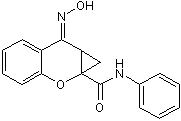Therefore, we concluded that this predicted drug-target interaction network tends to be controlled by only a small number of drugs and targets, which have a lot of available pharmacological interaction information in the learning dataset. Finding new therapeutic indications for the existing drugs represents an efficient parallel approach to the drug discovery, since existing drugs already have extensive clinical history and toxicological information. All above models and the derived information show that new potential drug-target interaction can be effectively predicted by our proposed approach. And to achieve this goal, i.e., to further predict the novel targets for the existing drugs by using our models, two representative small molecules MDMA and Resveratrol were selected presently to illustrate the models’ applications, since the comprehensive drug-target interaction network is immensely huge. MDMA is a known psychoactive drug, which is also effective in the treatment of post-traumatic stress disorder. And Resveratrol has the potential of creating anti-inflammatory and anticancer effects. The selection of these two molecules is owing to that their related target information has been reported in literature, but has not been included in training set of the obtained RF Model I and RF Model II. The potential targets of these two molecules are predicted from the pool of all 3987 target proteins using the RF Model I and RF Model II, respectively. Traditional drug discovery is largely based upon ‘one moleculeone target-one disease’ model, but there is a growing recognition that drugs work by targeting multiple proteins. The biological network and pathways possessing inherent redundancy and robustness imply that regulating a single target might fall short of producing the desired therapeutic effects. Therefore, the development of multiple drug-target interaction prediction models to investigate disease-associated drug-target network will undoubtedly be an enduring trend for future drug discovery. In this report, by integrating the information from the chemical structure, protein sequence and pharmacological drug-target interaction data, we developed a set of in silico models using a large-scale dataset to predict the potential drug-target interactions. All models were evaluated and verified by both internal and external validations. The outcomes demonstrated the strength of our proposed method for predicting drug-target interaction, which indicates that the conserved binding patterns between drugs and targets can be extracted by our approach from the dataset that contains adequate feature vectors for chemical-protein pairs. Selecting a suitable encoding of the Dexrazoxane hydrochloride compounds and proteins information is one of the main computational challenges for the prediction of drug-target interactions using in silico tools. In our case, we apply  DRAGON molecular descriptors and structural and physicochemical properties descriptors to represent ligands and targets, respectively. Our successful predictions indicate that this adopted chemical and proteins encoding can effectively distinguish the drug-target binding pairs from the non-binding pairs. Additionally, the choice of merging protein and ligand descriptors into a single Ginsenoside-Ro vector describing both partners was also adopted in this study, which means that the structural similarity between the two different drugs/targets are independently evaluated by the same measure and are then multiplied to give the overall similarity.
DRAGON molecular descriptors and structural and physicochemical properties descriptors to represent ligands and targets, respectively. Our successful predictions indicate that this adopted chemical and proteins encoding can effectively distinguish the drug-target binding pairs from the non-binding pairs. Additionally, the choice of merging protein and ligand descriptors into a single Ginsenoside-Ro vector describing both partners was also adopted in this study, which means that the structural similarity between the two different drugs/targets are independently evaluated by the same measure and are then multiplied to give the overall similarity.
Although this description prevents from separate tuning of similarity measures in the protein and ligand spaces
Leave a reply